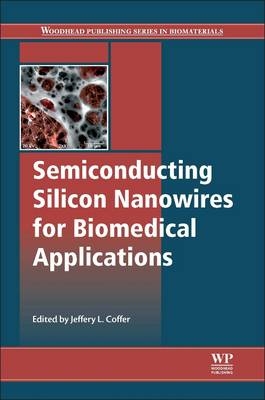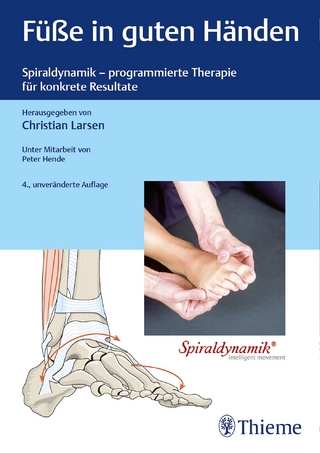
Semiconducting Silicon Nanowires for Biomedical Applications
Woodhead Publishing Ltd (Verlag)
978-0-85709-766-8 (ISBN)
- Titel erscheint in neuer Auflage
- Artikel merken
Biomedical applications have benefited greatly from the increasing interest and research into semiconducting silicon nanowires. Semiconducting Silicon Nanowires for Biomedical Applications reviews the fabrication, properties, and applications of this emerging material.
The book begins by reviewing the basics, as well as the growth, characterization, biocompatibility, and surface modification, of semiconducting silicon nanowires. It goes on to focus on silicon nanowires for tissue engineering and delivery applications, including cellular binding and internalization, orthopedic tissue scaffolds, mediated differentiation of stem cells, and silicon nanoneedles for drug delivery. Finally, it highlights the use of silicon nanowires for detection and sensing. These chapters explore the fabrication and use of semiconducting silicon nanowire arrays for high-throughput screening in the biosciences, neural cell pinning on surfaces, and probe-free platforms for biosensing.
Semiconducting Silicon Nanowires for Biomedical Applications is a comprehensive resource for biomaterials scientists who are focused on biosensors, drug delivery, and tissue engineering, and researchers and developers in industry and academia who are concerned with nanoscale biomaterials, in particular electronically-responsive biomaterials.
Jeffery L. Coffer is a Professor in the Department of Chemistry and Biochemistry of Texas Christian University where he has been a member of the faculty since 1990. With a principal focus on silicon nanostructures for drug delivery and “smart biomedical applications, his research group has investigated a variety of therapeutic targets using these platforms, including structures with anticancer, antibacterial, and anti-inflammatory relevance. Composites comprised of nanostructured Si and biocompatible polymers with utility for tissue engineering are also of interest. Coffer has authored more than 165 refereed publications, three patents, numerous book chapters, and received multiple awards, including the Chancellor’s Award for Distinguished Achievement as a Teacher–Scholar and the Wilfred T. Doherty Award for Research (American Chemical Society).
Contributor contact details
Woodhead Publishing Series in Biomaterials
Foreword
Part I: Introduction to silicon nanowires for biomedical applications
1. Overview of semiconducting silicon nanowires for biomedical applications
Abstract:
1.1 Introduction
1.2 Origins of silicon nanowires
1.3 The structure of this book
1.4 Conclusion
1.5 References
2. Growth and characterization of semiconducting silicon nanowires for biomedical applications
Abstract:
2.1 Introduction
2.2 Synthesis methods for silicon nanowires (SiNWs)
2.3 Characterization methods
2.4 Synthesis of semiconductor SiNWs by the chemical vapor deposition (CVD) method
2.5 Conclusion
2.6 Future trends
2.7 Sources of further information and advice
2.8 References
3. Surface modification of semiconducting silicon nanowires for biosensing applications
Abstract:
3.1 Introduction
3.2 Methods for fabricating silicon nanowires (SiNWs)
3.3 Chemical activation/passivation of SiNWs
3.4 Modification of native oxide layer
3.5 Modification of hydrogen-terminated silicon nanowires (H-SiNW)
3.6 Site-specific immobilization strategy of biomolecules on SiNWs
3.7 Control of non-specific interactions
3.8 Conclusion
References
4. Biocompatibility of semiconducting silicon nanowires
Abstract:
4.1 Introduction
4.2 In vitro biocompatibility of silicon nanowires (SiNWs)
4.3 In vivo biocompatibility of SiNWs
4.4 Methodology issues
4.5 Future trends
4.6 Conclusion
4.7 References
Part II: Silicon nanowires for tissue engineering and delivery applications
5. Functional semiconducting silicon nanowires for cellular binding and internalization
Abstract:
5.1 Motivation: developing a nano-bio model system for rational design in nanomedicine
5.2 Methods: non-linear optical characterization and surface functionalization of silicon nanowires (SiNWs)
5.3 Applications: in vivo imaging and in vitro cellular interaction of functional SiNWs
5.4 Conclusions and future trends
5.5 References
6. Functional semiconducting silicon nanowires and their composites as orthopedic tissue scaffolds
Abstract:
6.1 Introduction
6.2 Nanowire surface etching processes to induce biomineralization
6.3 Nanowire surface functionalization strategies to induce biomineralization
6.4 Construction of silicon nanowire (SiNW)-polymer scaffolds: mimicking trabecular bone
6.5 The role of SiNW orientation in cellular attachment, proliferation and differentiation in the nanocomposite
6.6 Conclusions and future trends
6.7 Acknowledgement
6.8 References
7. Mediated differentiation of stem cells by engineered semiconducting silicon nanowires
Abstract:
7.1 Introduction
7.2 Methods for fabricating silicon nanowires (SiNWs)
7.3 Regulated differentiation for human mesenchymal stem cells (hMSCs)
7.4 SiNWs fabricated by the electroless metal deposition (EMD) method and their controllable spring constants
7.5 Mediated differentiation of stem cells by engineered SiNWs
7.6 Conclusion
7.7 Future trends
7.8 Acknowledgements
7.9 References
8. Silicon nanoneedles for drug delivery
Abstract:
8.1 Introduction
8.2 Strategies for nanoneedle fabrication
8.3 Drug loading of nanoneedles and release patterns
8.4 Drug delivery using nanoneedles
8.5 Toxicity of nanoneedles
8.6 Overview of nanoneedle applications
8.7 Conclusion
8.8 References
Part III: Silicon nanowires for detection and sensing
9. Semiconducting silicon nanowire array fabrication for high throughput screening in the biosciences
Abstract:
9.1 Introduction
9.2 Fabrication of silicon nanowire (SiNW) field effect transistor (FET) arrays for high throughput screening (HTS) in the biosciences
9.3 Surface modification of SiNW FETs for HTS in the biosciences
9.4 Integration of SiNW FETs with microfluidic devices for HTS in real-time measurements
9.5 Examples/applications of SiNW FETs
9.6 Conclusion
9.7 Future trends
9.8 References
10. Neural cell pinning on surfaces by semiconducting silicon nanowire arrays
Abstract:
10.1 Introduction
10.2 Toward control of neuronal topography and axo-dendritic polarity
10.3 Neuron networks on top of silicon nanowires (SiNWs)
10.4 Future trends
10.5 Conclusion
10.6 References
10.7 Appendix: experimental section
11. Semiconducting silicon nanowires and nanowire composites for biosensing and therapy
Abstract:
11.1 Introduction
11.2 Fabrication of silicon nanowires (SiNWs) and two-dimensional SiNW architectures
11.3 SiNWs for biosensing applications
11.4 Fabrication of SiNW-polymer composite systems
11.5 Biomedical applications of SiNW-polymer composites
11.6 Conclusions and future trends
11.7 References
12. Probe-free semiconducting silicon nanowire platforms for biosensing
Abstract:
12.1 Introduction
12.2 Silicon nanowire (SiNW) biosensors
12.3 Probe layers
12.4 Integrated sample delivery
12.5 Electrical biasing and signal measurement
12.6 Examples/applications of SiNW biosensor platforms
12.7 Conclusions
12.8 Future trends
12.9 References
Index
| Reihe/Serie | Woodhead Publishing Series in Biomaterials |
|---|---|
| Verlagsort | Cambridge |
| Sprache | englisch |
| Maße | 156 x 234 mm |
| Gewicht | 600 g |
| Themenwelt | Medizin / Pharmazie ► Physiotherapie / Ergotherapie ► Orthopädie |
| Naturwissenschaften ► Physik / Astronomie ► Quantenphysik | |
| Technik ► Maschinenbau | |
| Technik ► Medizintechnik | |
| ISBN-10 | 0-85709-766-0 / 0857097660 |
| ISBN-13 | 978-0-85709-766-8 / 9780857097668 |
| Zustand | Neuware |
| Informationen gemäß Produktsicherheitsverordnung (GPSR) | |
| Haben Sie eine Frage zum Produkt? |
aus dem Bereich



